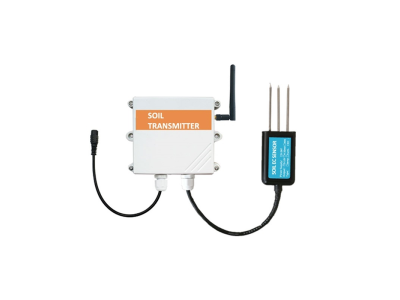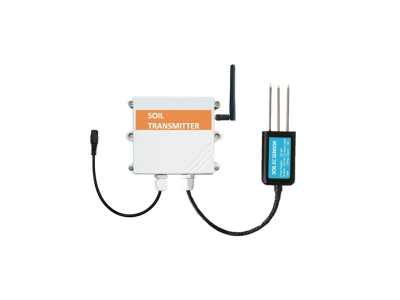Soil sensors have transformed the way we approach soil management and conservation. By providing real-time data on soil conditions, these sensors help farmers and land managers make informed decisions about crop irrigation, fertilization, and pest control. They also aid in environmental monitoring efforts, climate change research, and urban planning. Soil sensor data has enormous potential in addressing the challenges posed by climate change, water scarcity, and global food security. This article explores the power of soil sensor data, its applications, and the future opportunities it presents.

Precision Agriculture:
Precision agriculture is an approach to farming that uses technology to optimize crop yields while minimizing inputs such as water, fertilizer, and pesticides. Soil sensors play a vital role in precision agriculture by collecting data on soil moisture, temperature, pH levels, nutrient content, and salinity. This information helps farmers tailor their irrigation and fertilization practices to the specific needs of each crop. By fine-tuning their approach, farmers can reduce water usage, prevent nutrient runoff, and improve crop performance. Soil sensor data also allows farmers to monitor soil health and detect signs of plant stress or disease, enabling timely intervention. This targeted approach to farming enhances crop yields while reducing the impact on the environment.
Environmental Monitoring:
Soil sensors contribute to environmental monitoring efforts by providing insights into soil health and quality. They help identify areas contaminated with pollutants, analyze soil composition, and detect changes in soil moisture levels caused by natural events or human activities. By understanding soil conditions, environmental scientists can assess the impact of pollutants, develop remediation strategies, and monitor the effectiveness of restoration efforts. Soil sensor data also aids in the monitoring of soil erosion and land degradation, enabling proactive measures to protect ecosystems and prevent soil loss.
Climate Change Research:
Soil sensor data is essential in studying the impact of climate change on soil ecosystems. Changes in soil moisture and temperature can affect carbon dioxide and other greenhouse gas emissions, which contribute to climate change. By understanding these dynamics, scientists can improve climate models, assess the impact of climate change on soil ecosystems, and develop strategies for carbon sequestration. Soil sensor data also provides insights into soil carbon content, enabling the measurement of carbon sequestration potential, a critical tool in mitigating climate change.
Land Management and Conservation:
Soil sensors contribute to effective land management and conservation practices. By monitoring soil moisture, sensors help determine optimal planting times, prevent over-irrigation, and avoid soil erosion. Soil sensor data also assists in assessing the impact of land use changes, such as deforestation or urbanization, on soil health and biodiversity. This information is critical in preserving natural habitats, promoting sustainable land management practices, and protecting soil resources.
Urban Planning and Infrastructure:
Soil sensor data has applications in urban planning and infrastructure development. By studying soil properties and moisture levels, engineers can design sustainable drainage systems, preventing flooding and improving stormwater management. Soil sensor data also aids in green space planning, helping identify suitable areas for urban gardens, parks, and tree planting initiatives. The use of soil sensors in urban environments promotes sustainability, resilience, and livability.
Advancements in Soil Sensor Technology:
Recent advancements in soil sensor technology have led to the development of wireless and IoT-enabled sensors, miniaturization, and multi-parameter sensing. Wireless connectivity enables remote monitoring, reducing the need for manual data collection. Miniaturization has enabled the development of sensors that can be embedded directly into the soil, allowing continuous monitoring without disturbing the natural soil environment. Multi-parameter sensing capability enhances the accuracy and efficiency of soil monitoring, reducing the need for multiple sensors and data collection processes. As soil sensor technology continues to evolve, the potential of soil sensor data in addressing global challenges increases.
Challenges and Considerations:
Ensuring the accuracy and reliability of soil sensor data is crucial for obtaining meaningful insights. Proper calibration and regular maintenance of sensors are essential to minimize measurement errors and ensure accurate readings. Determining the optimal placement and coverage of soil sensors is crucial for capturing representative soil conditions, and promoting data sharing and integration among different sensor networks and stakeholders can enhance the collective understanding of soil ecosystem






